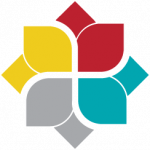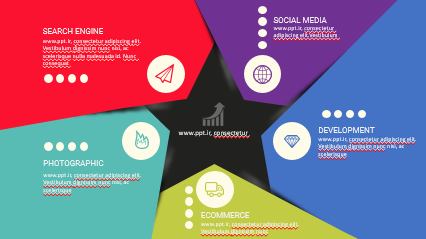EURAMA
اسلاید 1: www.tabaye.ir
اسلاید 2: -EURAMA- CREATING PERFECT HEALTH IN EUROPE THROUGH AYURVEDA
اسلاید 3: OVERVIEW PRIORITIES - Identifying EURAMA’S strengths & priorities for the development of Ayurveda in EuropePOLICY – International Policy, EU Policy, EURAMA policyPRACTICE – Best practice PARTNERSHIPS – Ayurveda, Modern medicine, Science POWER – Knowledge is Organizing Power. Generating influence through vision, knowledge, sattva EDUCATION – orientation, clinical skills development, professional training EVIDENCE – what evidence exists? what evidence is needed? What evidence can be generated through the EURAMA & the EU in partnership with centres of excellence in India and globally? EVALUATION – what is the impact of what EURAMA does? Evaluation for advancement
اسلاید 4: PRIORITIES - EURAMA An association for doctors and vaidyas to maintain an academic framework by creating a platform for scientific research and exchange within the medical profession, thereby ensuring the public and political acceptance of Ayurveda as a science and valuable medical practice for the individual and society
اسلاید 5: POLICY.
اسلاید 6: .
اسلاید 7:
اسلاید 8:
اسلاید 9: Policy – India & China INDIA – NATIONAL POLICY In India, formal recognition for Indian systems of medicine came with the Indian Medicine Central Council Act of 1970. In 2002, India developed a specific national policy to facilitate the integration of these health care systems into national health programmes. The policy emphasizes affordability, safety, efficacy and the sustainable use of raw materials (Lavekar & Sharma, 2005). CHINA - NATIONAL POLICY The Government’s commitment to “develop modern medicine and Traditional Chinese Medicine” has been written into the National Constitution and the two are regarded as of equal importance (Baoyan, 2005).
اسلاید 10: .
اسلاید 11: .
اسلاید 12: China – India: differencesToday acupuncture is a licensed practice in most industrialised countries & there are professional bodies, standardised curricula and regulatory boards for acupuncture in these countries. There are also WHO Guidelines for correct practice of acupuncture & for research into acupuncture. Similarly, there are WHO standards for safety and evaluation of Chinese herbal medicines.
اسلاید 13: WHO SupportThere are 7 WHO Collaborating Centres on TCM in China and 1 in Australia.2 centres in South Korea, 1 in North Korea, 1 in Vietnam, and 2 in Japan are on systems derived from TCMNo WHO Collaborating Centres on Ayurveda or other ISMs
اسلاید 14: What China has done to promote TCMFor more than a decade, China has had a sub-ministry of Traditional Chinese Medicine (TCM), with ten departments. These include departments for professional licensure, TCM research, product standards, education etc. There is an entire department dedicated to foreign trade in TCM.
اسلاید 15: TCM in the UKIn the UK, every small town can be found to have a Chinese herbalist shop on its High Street. These are supplied through Chinese Government owned or supported TCM herbal factories & corporations. Training is provided through Government colleges, including six full national universities dedicated exclusively to training in and research on TCM. Acupuncture is a licensed profession covered by the NHSChinese herbalism will soon be licensed
اسلاید 16: AfricaEven in Africa, there is an extensive network of TCM practitioners offering services to local Chinese and Western communities and to more affluent Africans. They import Chinese herbs, which represents foreign exchange earnings for China. Much of this is supported by the Local Chinese Embassy.There are Chinese Government funded research, education and exchange programmes.
اسلاید 17: Globalization of AyurvedaHas been led by private sector. Began with MAV, others have followedNo formal Ayurveda lobby with governments or WHORestrictions on Ayurvedic herbs No formal licensure of Ayurvedic practitioners outside South & SE Asia. No WHO guidelines on any aspect of Ayurvedic practice or research
اسلاید 18: Global regulatory status of AyurvedaResult: No internationally accepted Ayurvedic curriculumRestrictions on Ayurvedic herbs No formal licensure of Ayurvedic practitioners outside the sub-continent,No WHO guidelines on any aspect of Ayurvedic practice or research
اسلاید 19: Policy on Finance: Who pays for TCAM?A very high proportion of TCAM expenditure throughout the world is covered by out-of-pocket payments or private health insurance. Consistent trend in West towards utilization by people with a high disposable income.
اسلاید 20: .
اسلاید 21: EU POLICY on FINANCINGPublic health insurance is an important funding mechanism in Europe, with 22 European countries offering full or partial reimbursement for selected TCAM therapies (Burford et al, 2007). In the United Kingdom in 1995, 40% of GP practices provided access to CAM, with 10% of the cost being met by the National Health Service (Thomas et al, 2001).
اسلاید 22: US & AUSTRALIAN POLICY on FINANCINGSome American medical insurers confer benefits for limited complementary medical services, primarily through employer-sponsored health plans (Pelletier & Astin, 2002). In the year 2000, 70% of employee-sponsored programs covered chiropractic; 17% covered acupuncture, 12% covered massage, and the numbers dwindled from there for other CAM services (White House Commission on CAM Policy, 2002). In Australia, since the introduction of a Medicare rebate for acupuncture in 1984, use of acupuncture by medical practitioners has increased greatly. Medicare reimbursements to doctors for acupuncture rose from $7.7 million to $17.7 million (Easthope et al, 1998).
اسلاید 23: Japan & Korea: POLICY on FINANCINGSince 1976, the Ministry of Health and Welfare of Japan has approved 147 Kampo formulations, as well as their individual herbal components, to be covered by the national health insurance system. In the Republic of Korea, national health insurance has covered traditional medicine since 1987.
اسلاید 24: .
اسلاید 25: PRACTICEEstablish standards of Best Practice for Ayurveda in Europe. Draw on Govt of India & All India Ayurveda Congress standards for clinical practiceWork with medical associations & regulatory agencies to ensure acceptability of standardsAddress EU’s wellness concerns as well as medical needs
اسلاید 26: What is wellness? Wellness has an emphasis which is quite distinct from the mainstream health sciences focus on illness and pathology. According to the US National Wellness Institute (NWI), wellness is: “an active process through which people become aware of, and make choices towards, a more successful existence”.NWI identifies six dimensions of wellness: Social; Occupational; Spiritual; Physical; Emotional; Intellectual.LOHAS – Lifestyles of Health And Sustainability – is a framework that focuses on “health & Fitness; the environment; personal development; sustainable living; and social justice.”
اسلاید 27: MedispasA medical spa is a facility whose medical program is run under the supervision of a licensed healthcare professional, according to The International Medical Spa Association.Industry wide recognition of the need to focus on wellness - need to shift from a technology-driven industry to one that focuses on wellness and preventive health. Medical Spa Society: Two things are needed -- a physician on premises actively involved in the patients care and a level of care that will stand up to conventional scrutiny by accepted standards
اسلاید 28: EVIDENCE BASE FOR AYURVEDA IN EUROPE PRIORITY DISEASES (Medical perspective). Diseases for which current conventional treatment regimens are unsatisfactory, e.g. many cancers and chronic debilitating conditions, for which the public are turning to Ayurveda & other branches of CM.PRIORITY POPULATIONS (Public Health Perspective). Also needing attention are the unmet health needs of ethnic minorities, women, children, the poor, the elderly and those with special medical conditions. PARTNERSHIPS FOR RESEARCH CAPACITY BUILDING. Research database development, coordination, disseminationPartnerships with India’s Golden Triangle Initiative, ICMR, AYUSHCreate WHO Collaborating Centres in Europe for research on AyurvedaResearch funding plan for EUStudent fellowships & research fellowships in Ayurveda
اسلاید 29: .Evidence base in Asian-themed spas
اسلاید 30: S Medical Spa Bangkok.
اسلاید 31: S Medical Spa, BangkokDr Pakpilai Thavisin, founder director - dermatologistS Medical Spa is a leading & award winning medical spa in Asia. Offers integrated healthcare service, combining Eastern traditional healing and spa therapies plus the modern Western medical science. Classic Spa programmes: spa and relaxation, vitality, beauty, figure, holistic, and purification Three new programmes: office syndrome: neck, shoulder and back pain as well as headaches due to working at a computerspeedy facial treatment: treatment during lunch break/after workstress management and sleep medicine: meditation program to help people suffering from stress and insomnia
اسلاید 32: The Raj – Ayurvedic Spa Iowa, USA.
اسلاید 33: .The Raj, a New York Times & Conde Naste ‘best destination’ spa, is an Ayurvedic spa in Iowa. The Raj guests are advised: ‘Lipophilic toxicants (man-made toxins), such as PCBs, DDEs, DDT and other chemicals and pesticides tend to accumulate in our fat tissues. They have been associated with hormone disruption, immune system suppression, reproductive disorders, cancer, and other diseases’ (www.theraj.com)
اسلاید 34: .Drawing on published research, clients at The Raj are informed that the Ayurvedic programs offered “are capable of dislodging lipophilic and other toxins from the tissues and reducing their concentration in the body”. Is this more detail than consumers want? The Raj has a high percentage of repeat guests.
اسلاید 35: ..
اسلاید 36: .,
اسلاید 37: ..
اسلاید 38: ..
اسلاید 39: EDUCATIONFamiliarizationSkills developmentFull professional accreditation
اسلاید 40: CM Education - EUThe German Federal Chamber of Physicians regulates postgraduate CM education of physicians, and CM medical associations have developed an internationally standardised postgraduate education.In the United Kingdom, Curricula for accreditation of acupuncturists, osteopaths, chiropractors, medical herbalists have been approved. Short courses in CM are offered as part of the undergraduate curriculum in all medical schools, as required by the General Medical Council. In Hungary, where the practice of therapies such as homeopathy, Ayurveda and traditional Tibetan medicine is restricted to allopathic physicians, these subjects are taught in medical universities.
اسلاید 41: CM Education - USAIn the United States and Canada, a growing number of universities offer continuing education and elective courses on different CM therapies.As of 2005, 98 of the 126 medical schools in the U.S. included CAM instruction as part of their required curriculum, as well as a range of TCAM electives (Brixey et al, 2005).
اسلاید 42: EVALUATIONBuild evaluation into all of EURAMA’s activities. What is the impact of EURAMA’s activities in all of its areas of activity? What strengths & weaknesses emerge from evaluation?Set & re-set priorities through evaluation. Evaluate for advancement –
اسلاید 43: What is needed?A commitment to support the globalization of Ayurveda in the following ways:Through development of WHO guidelines on some of the following areas:curriculum, clinical practice of Ayurveda, standards for Ayurvedic herbal preparations,panchakarma, yoga instruction, etc.
اسلاید 44: National & Regional Ayurveda AssociationsIn partnership with the Govt of India: Develop/adapt Ayurvedic guidelines and standards, lobby national EU governments and the EC to strengthen the development of Ayurveda via supportive regulationsFund & organise conferences that will produce documents, guidelines, curricula etc that can be used nationally, regionally and though the WHO process to establish global standards for a high level of Ayurvedic practice and regulatory support
اسلاید 45: PRIORITIESEURAMA’s focus should vary according to national need & regulatory openings. Adapt EU wide policy goals to national contexts or EC programmes.
اسلاید 46: ConclusionsWellness is now a $1trillion industry. The World Bank estimates it to be a $3 trillion industry by mid-centuryWithin this, Asian healthcare systems & traditions are globalizingWomen are leading the trends.The Spa industry is the frontline of Ayurvedic expansion in the early 21st CenturyEvidence of effectiveness & safety are of key importance to regulators & consumers alikeEURAMA’s time is here. A focus is needed on Policy, Practice, Priorities, Education, Evidence, Evaluation & Power
اسلاید 47: POWEREURAMA - Generating influence throughvision knowledge sattva Knowledge is Organizing Power
اسلاید 48: .THANK YOU www.giftsofhealth.org












نقد و بررسی ها
هیچ نظری برای این پاورپوینت نوشته نشده است.